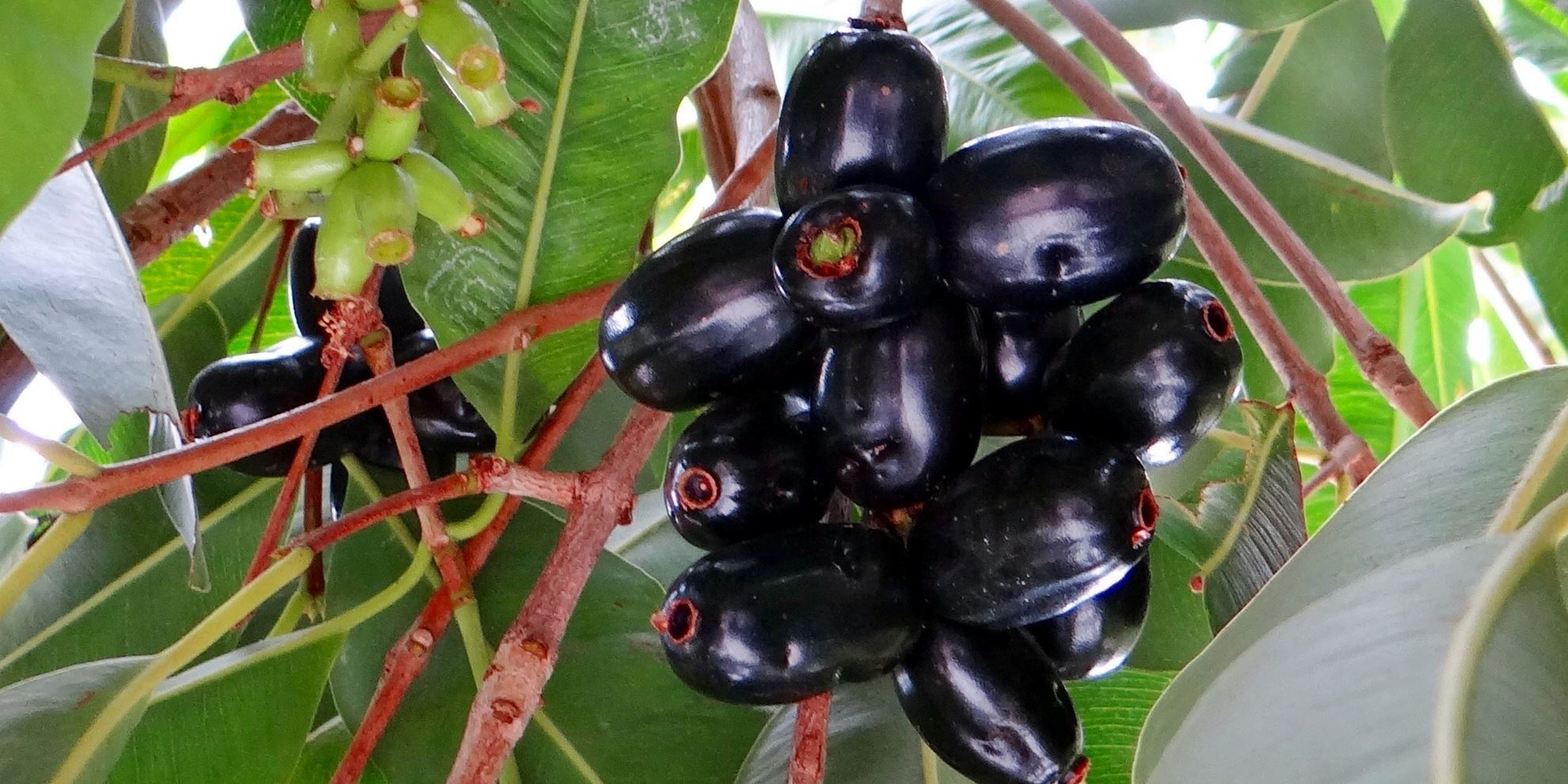As a rapidly growing species, it can reach heights of up to 30 m (100 ft) and can live more than 100 years. Its dense foliage provides shade and is grown just for its ornamental value. At the base of the tree, the bark is rough and dark grey, becoming lighter grey and smoother higher up. The wood is water resistant after being kiln-dried. Because of this, it is used in railway sleepers and to install motors in wells. It is sometimes used to make cheap furniture and village dwellings, though it is relatively hard for carpentry.
The aromatic leaves are pinkish when young, changing to a leathery, glossy dark green with a yellow midrib as they mature. The leaves are used as food for livestock, as they have good nutritional value. Jambolan is a tree. The seed, leaf, bark, and fruit are used to make medicine.
Features of Jambalano Tree
- Jambolan fruits have a sweet or slightly acidic flavor, are eaten raw, and may be made into sauces or jam. Fruits may be made into juice, jelly, sorbet, syrup (e.g., kala khatta), or fruit salad.
- Raw fruit is 83% water, 16% carbohydrates, 1% protein, and contains negligible fat. In a 100 gram reference amount, the raw fruit provides 60 calories, a moderate content of vitamin C, and no other micronutrients in appreciable amounts (table).
- Jambolan is widely used in folk medicine for diabetes.
- Jambolan seed and bark contains chemicals that might lower blood sugar, but extracts from jambolan leaf and fruit don't seem to affect blood sugar. Jambolan also contains chemicals that might protect against oxidation damage, as well as chemicals that reduce swelling.

